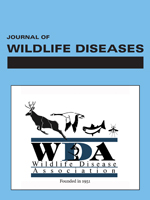Lead-induced mortality appears to have been a major factor in the decline of the California condor (Gymnogyps californianus). We orally dosed turkey vultures (Cathartes aura) with BB-sized lead shot from January 1988 through July 1988 to determine physiologic response (delta-aminolevulinic acid dehydratase inhibition, erythrocyte protoporphyrin levels, anemia), diagnostic tissue lead concentrations (blood, liver, and kidney), and comparative sensitivity of this species. Two turkey vultures died and two became so intoxicated they were euthanized. Overall, responses of measured parameters were comparable to other species exposed to lead although there was considerable individual variation. Survival time (143–211 days), even with the large numbers of shot and constant redosing, was much longer than reported for other species of birds, suggesting considerable tolerance by turkey vultures to the deleterious effects of lead ingestion. Based on these observations, turkey vultures appear to be poor models for assessing the risk of lead poisoning to California condors or predicting their physiologic response.
How to translate text using browser tools
1 January 2003
EXPERIMENTAL LEAD POISONING IN TURKEY VULTURES (CATHARTES AURA)
James W. Carpenter,
Oliver H. Pattee,
Steven H. Fritts,
Barnett A. Rattner,
Stanley N. Wiemeyer,
J. Andrew Royle,
Milton R. Smith

Journal of Wildlife Diseases
Vol. 39 • No. 1
January 2003
Vol. 39 • No. 1
January 2003
California condors
Cathartes aura
endangered species
Gymnogyps californianus
lead poisoning raptors
turkey vultures




